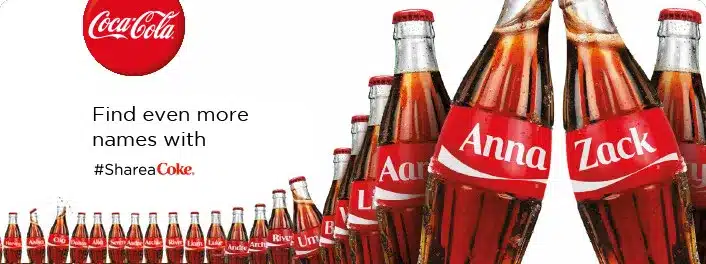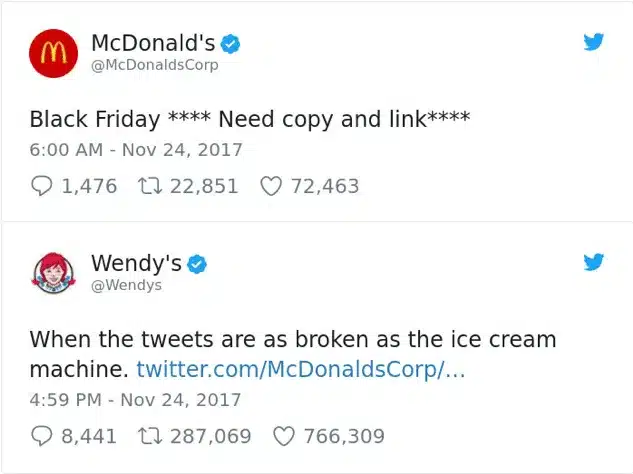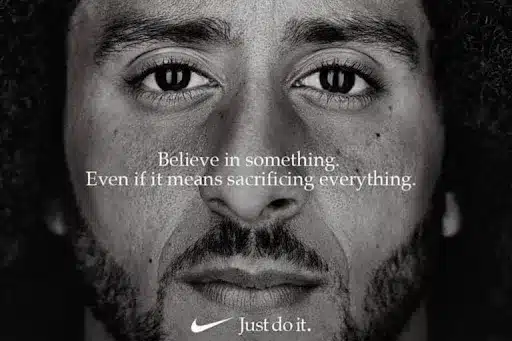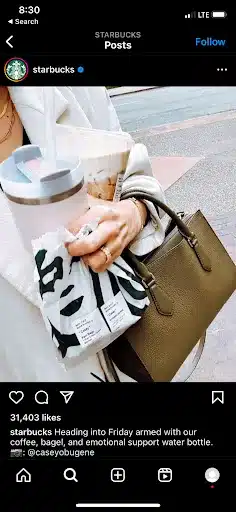To succeed in social media marketing, it’s imperative that you have a strong handle on key metrics. One of the most important metrics to track is social media reach.
In this article, we’ll go beyond a simple social media reach definition to dig into exactly what this metric is all about, why it matters, and how to maximize it for your clients.
Create, schedule, and optimize social posts with powerful AI tools
What is reach in social media?
Social media reach, at its core, is the total number of unique users who have seen or interacted with your content on a given social media platform. It’s a key metric in AI social media marketing that provides an accurate picture of the breadth of your online influence.
In essence, when we talk about reach, we’re referring to the potential audience size for your content. For example, if you make a post on Facebook, the reach of that post is the number of individual users who had that post show up in their news feed, regardless of whether they interacted with it or not.
What’s so special about social media reach metrics?
Social media reach isn’t just about quantity, but about the potential for interaction, engagement, and conversions. It plays a fundamental role in assessing the effectiveness of your social media strategy. Understanding reach, its relationship to other metrics, and how to expand it is important in fostering a solid relationship with your target audience.
Organic vs. paid reach
There are primarily two types of reach: organic reach and paid reach.
Organic reach refers to the number of unique people who view your content naturally, without any paid distribution. This happens when users follow your account or when your posts are shared by others in their network. For example, a retweet expands your reach to include the audience of the person who shared the tweet. Organic reach is largely driven by the quality and relevance of your content, and how well it resonates with your audience.
On the other hand, paid reach is the number of unique individuals who view your content due to paid promotion. This typically involves purchasing ads or sponsored content to expand your visibility beyond your existing follower base. Paid reach is often used to supplement organic reach, especially when businesses want to target specific demographic groups or promote certain products or services.
Social media is an important communication channel. Ensure you create content that connects with your audience by downloading our free “White-label social media checklist” now.
The importance of social media reach
Social media reach metrics may not get the same attention as vanity metrics such as likes, but this important indicator shouldn’t be overlooked. Here’s why reach is so vital:
1. It demonstrates a brand’s potential audience
At its most fundamental level, reach indicates the size of a brand’s potential audience—the number of individuals who have seen or could have seen your content.
This data informs you of your existing visibility and provides insight into your capacity for expansion. A high reach implies that your content is being viewed by a broad audience, which can lead to increased followers and a larger community over time.
2. It’s essential for brand awareness
Brand awareness is a prerequisite for just about every business goal your social media management clients might have, from newsletter sign-ups to conversions. Reach plays a significant role in driving brand awareness. The more users see a business’s content, the more that brand name will circulate online.
In short: when your reach is wide, you have a better chance of familiarizing more people with your brand, its values, and what it offers. This increased awareness can foster brand loyalty and positive associations among the target audience.
3. It boosts engagement, traffic, and online sales
A wider reach often translates into higher engagement rates, increased website traffic, and more website conversions.
How? As more unique users see your content, there’s an increased chance that they will like your content, leave a comment, share it, or click through to the website. Over time, this increased visibility can convert casual viewers into followers, potential leads, and ultimately, customers.
4. It’s an indicator of social media campaign success
Reach serves as a critical tool for evaluating the success of your social media campaigns. By comparing the reach of different posts or campaigns, you can identify which strategies are most effective and which need tweaking. Reach can also provide valuable insights into the optimal time to post, the type of content that resonates best with your audience, and how effectively your paid promotions are expanding your audience.
Whether you handle your clients’ campaigns in-house or you rely on white-label experts to help you, understanding reach is one of the best ways to gauge success.
Reach in action: Examples of brands with awesome social media reach
These major social media players have their approach to maximizing social media reach dialed in. Let’s take a look at four real-life examples of brand social media accounts and campaigns that showcase how reach can be maximized.
Coca-Cola’s Share a Coke campaign
Coca-Cola’s Share a Coke campaign is a classic example of a strategic initiative that bridged traditional and social media to dramatically expanded the brand’s reach—and sales.
The campaign featured Coke bottles personalized with 250 of the most common names among the target demographic, teenagers, encouraging young people to buy the beverage carrying their name or that of a friend.

On social media, the associated #ShareACoke hashtag spurred online sharing, turning consumers into advocates of the campaign. The hashtag saw impressive usage, with 89,000 uses on Twitter and 496,000 uses on Instagram, furthering Coca-Cola’s reach (MRS). This user-generated content (UGC) not only amplified their social media presence but also fostered a sense of personal connection with the brand, thus enhancing its reach significantly.
The result? On top of those impressive shares on Instagram and Twitter, Coke’s sales increased an impressive 11% following the campaign. Over 1.25 more million teenagers had consumed a Coke in the year after the campaign ran compared to the previous year. The influence of this campaign can still be seen in the popularity of personalization in marketing today.
Wendy’s Twitter account
The Wendy’s Twitter account is a fun example of innovative social media use to boost reach. Known for its witty, humorous, and often sassy responses, Wendy’s unique approach to engagement has won over Twitter users and spurred legions of imitators.

Since Wendy’s Twitter account took off, many other brands have leaned into adopting an edgier, youth-oriented voice on Twitter. However, Wendy’s deserves credit for carving out this original approach to boosting social media reach.
The brand’s distinct, personable approach allowed them to stand out from other fast-food chains and foster a strong presence on Twitter—all while sounding more like a typical Gen Z social media user than a fast-food chain. By creating content that users find unexpected, entertaining, and shareable, Wendy’s successfully amplified its reach and spurred a new social media style.
Nike’s #JustDoIt campaign
Nike’s #JustDoIt campaign featuring Colin Kaepernick leaned into their iconic slogan to significantly amplify the brand’s social media reach. Nike made a bold move by choosing Kaepernick, former NFL quarterback and civil rights activist, as the face of their campaign in 2018 to mark the 30th anniversary of the well-known slogan.
The campaign revolved around the tagline “Believe in something. Even if it means sacrificing everything,” reflecting Kaepernick’s decision to kneel during the national anthem as a protest against racial injustice. This powerful stance sparked a global conversation and made waves across social media platforms.

Nike’s choice to align itself with a highly relevant, timely, and critical social issue resulted in a major increase in the brand’s social media reach. The campaign was both applauded and criticized, resulting in a surge of online discussions, shares, and comments—all of which, of course, boosted Nike’s reach considerably.
This approach demonstrated how a brand could employ social media platforms not only to promote products but also to take a stand on significant societal issues, thereby engaging their audience on a more meaningful level and effectively expanding their reach. Five years later, this type of activism-inflected advertising has become much more common.
Starbucks’ Instagram account
Starbucks’ approach to Instagram offers valuable insights into how a distinctive aesthetic sensibility and brand cohesiveness can boost reach. The brand’s Instagram feed features a wide range of content, from new product highlights to customer stories, all portrayed with a distinctive, on-brand look that is easily identifiable the moment it comes across your screen. It’s clear that the brand has a comprehensive social media management guide to help them stay on track.
While lots of different types of content are included throughout the feed, the coffee giant leans heavily into the use of UGC. This is a great way to increase social media reach because it encourages fans to post content that might be noticed and shared by an account as huge as Starbucks.

Social media reach vs. engagement: What’s the difference?
You might sometimes come across different social media metrics being used interchangeably but understanding the nuances between different indicators is important if you want to get an accurate picture of how your efforts are paying off.
Two key terms that often get confused are social media reach and engagement. Both are important, yet they offer distinct insights into your social media performance.
Defining social media engagement
Social media engagement refers to the interactions users have with your content. These interactions can take the form of likes, shares, comments, retweets, clicks, and other actions that a user can perform on a social media platform. Engagement measures how your audience is not just seeing your content, but actively responding to it.
For example, if a user sees a post, reads the caption, and scrolls by, no engagement would be captured. If the same user likes the post, they’ve engaged with it, and this would be captured in engagement metrics.
Distinguishing between social media reach and engagement
While social media reach tells you the total number of unique users who have seen your content, engagement measures the interactions that occur as a result of that content. In other words, reach refers to the breadth of your audience, while engagement reflects the depth of your relationship with that audience.
As an example, if your post is displayed to 1000 users (reach), and 50 users like, comment, or share the post (engagement), you start to get a clearer picture of how your content is performing. While you’ve managed to reach a broad audience, only a smaller portion of that audience has actively interacted with your content.
It’s normal for engagement to drop off as a percentage as reach expands. Interestingly, the fact that smaller accounts tend to have impressive engagement statistics is the very reason why micro-influencers have become more relevant in recent years.
Balancing social media reach and engagement
Reach and engagement work in tandem—high reach with low engagement could suggest your content is being seen but not resonating with your audience. Conversely, high engagement with low reach might indicate that your content is impactful and you have a fantastic online reputation, but it’s not seen by a large enough audience. In this case, you may want to adjust your social media strategy to your reach in order to get in front of more customers and generate more buzz.
While social media reach metrics provide insight into your potential audience size, engagement gives a glimpse into how that audience interacts with your content. Balancing these two aspects will ensure your content not only reaches a wide audience but also encourages meaningful interactions, fostering a stronger connection.
How to measure social media reach
We’ve covered the importance of reach, but how can you actually measure this metric? That’s what we’ll dive into next.
Use social media analytics tools
One of the most straightforward ways to measure your social media reach is through built-in analytics tools provided by social media platforms or third parties.
Facebook Page Insights, Instagram Insights, Twitter Analytics, LinkedIn Page Analytics, YouTube Analytics, and others can all provide detailed data on your reach, along with other valuable metrics.
For a more consolidated view, third-party social media analytics tools, like Vendasta’s Social Marketing, can be handy. They aggregate data from multiple platforms, providing a more comprehensive understanding of your overall social media reach across accounts. If you sell social media packages, a tool like this can help you understand all of your clients’ campaign performance at a glance.
Understand the key metrics for social media reach
Several metrics can help you gauge your reach, including:
- Impressions: The total number of times your content was displayed. Social media reach vs impressions are related, but distinct. A single user might see a post four times, accounting for 4 impressions. However, they would only count once in terms of reach.
- Audience growth: The increase in your followers or page likes over time can be a helpful indicator of positive reach.
- Shares and retweets: The number of times your content is shared by users can extend your reach beyond your immediate follower base.
- Hashtag performance: If you’re using branded or campaign-specific hashtags, their performance can also help measure reach.
Remember, reach isn’t usually just about one post: it’s about assessing these metrics consistently over time to understand your overall visibility on social media.
Understanding reach data
When reviewing your reach data, look for trends and patterns. Are there spikes in your reach corresponding to specific posts or campaigns? Do certain types of content result in a wider reach?
It’s also helpful to compare your reach data to engagement metrics. As we’ve discussed, high reach with low engagement may suggest that your content is being seen, but not compelling enough for interaction.
When interpreted correctly, understanding your reach data allows you to refine your strategy, focus on what works, and ultimately expand your client’s presence on social media.
Content tips for boosting social media reach
Creating compelling content that extends your social media is within your control. Let’s delve into some strategies that can help you boost your reach on social media.
Crafting Shareable Content
Creating content that resonates with your target audience and encourages sharing is one of the most effective ways to increase your social media reach. Here are a few tips for achieving this:
- Bring value: Content that educates, entertains, or inspires is more likely to be shared.
- Use visuals: Eye-catching images, videos, or infographics can significantly increase engagement and shareability. This isn’t limited to visual platforms like Instagram—it holds true on platforms like LinkedIn as well.
- Invite interaction: Prompt your audience to engage with your posts. For example, you might ask a question or run a contest to boost interactions and engagement.
Understand the audience
A deep understanding of your audience is non-negotiable in creating content that boosts your social media reach.
Use analytics tools to gain insights into your audience’s demographics, interests, and behaviors. Then, you can tailor your content to match your audience’s preferences can increase its appeal, engagement, and likelihood of being shared. The result? You’ll expand your social media reach in the process.
Don’t forget to use hashtags
Hashtags can meaningfully increase your reach by making your content discoverable to users beyond your immediate followers, without having to pay.
Using popular or trending hashtags—provided they’re related to your content—can expose it to a broader audience. Also, consider creating unique, brand-specific hashtags for campaigns to track their reach and engagement.
Explore paid ad options
Organic strategies are fantastic for expanding reach, but they can be complemented by paid advertising options to amplify results. Most social media platforms offer advertising tools that allow you to target specific audiences, extending your content’s visibility beyond your existing follower base.
For example, Facebook’s boost post feature can help your content reach a larger audience based on your chosen demographics, while Instagram’s sponsored posts appear directly in potential customers’ feeds.
Social media reach FAQs
1. What is social media reach?
Social media reach refers to the number of unique users who see your content across social platforms. It’s a key metric for understanding how effectively your brand connects with audiences and how well your social strategy drives awareness and engagement across the customer journey.
2. How is social media reach different from impressions?
Reach measures how many individual users have seen your content, while impressions represent the total number of times your content is displayed. One user may account for multiple impressions but only one reach. Reach offers a clearer view of your true audience size and visibility.
3. What factors affect social media reach?
Several factors influence reach, including the quality of your content, timing, audience engagement, and platform algorithms. Using the right hashtags, optimizing posting schedules, and balancing organic and paid efforts can all improve reach and expand visibility over time.
4. Why is social media reach important for businesses?
Social media reach determines how far your brand message travels. A strong reach builds awareness, attracts new followers, and drives customer engagement. It’s the foundation for growth, fueling every stage from discovery to conversion and long-term loyalty.
5. How can businesses increase their social media reach?
Businesses can increase reach by posting regularly, using targeted hashtags, creating shareable content, and experimenting with paid campaigns. Vendasta helps businesses and their partners amplify reach with AI-powered tools that automate publishing, optimize timing, and analyze performance in real time.
6. What’s the difference between organic and paid social media reach?
Organic reach comes from users discovering your content naturally, such as through shares or search results, while paid reach uses sponsored posts or ads to expand visibility. Combining both strategies helps brands connect with new audiences and strengthen engagement more consistently.
7. How can AI improve social media reach?
AI enhances reach by analyzing audience data, predicting high-performing content, and automating posting schedules. Vendasta’s AI Employees proactively optimize social media campaigns—suggesting improvements, generating tailored content, and adjusting strategies to boost performance automatically.
8. What metrics should be tracked alongside social media reach?
Important metrics include engagement (likes, comments, and shares), impressions, click-through rates, and conversions. Tracking these together provides a complete picture of performance. Vendasta’s Social Marketing dashboard unifies all these insights to help businesses refine strategy and improve results.
9. How do hashtags influence social media reach?
Hashtags increase visibility by making your content discoverable to audiences outside your follower base. Using relevant, trending, or branded hashtags connects your posts to larger conversations. Vendasta’s AI tools recommend high-performing hashtags to help businesses grow reach strategically.
10. How does Vendasta help businesses grow social media reach?
Vendasta empowers businesses of all sizes to expand their reach with AI-driven content creation, scheduling, and engagement tools. By combining your unique business data with AI and automation, Vendasta helps attract new customers, nurture stronger relationships, and build lasting brand loyalty—all from one unified platform.


